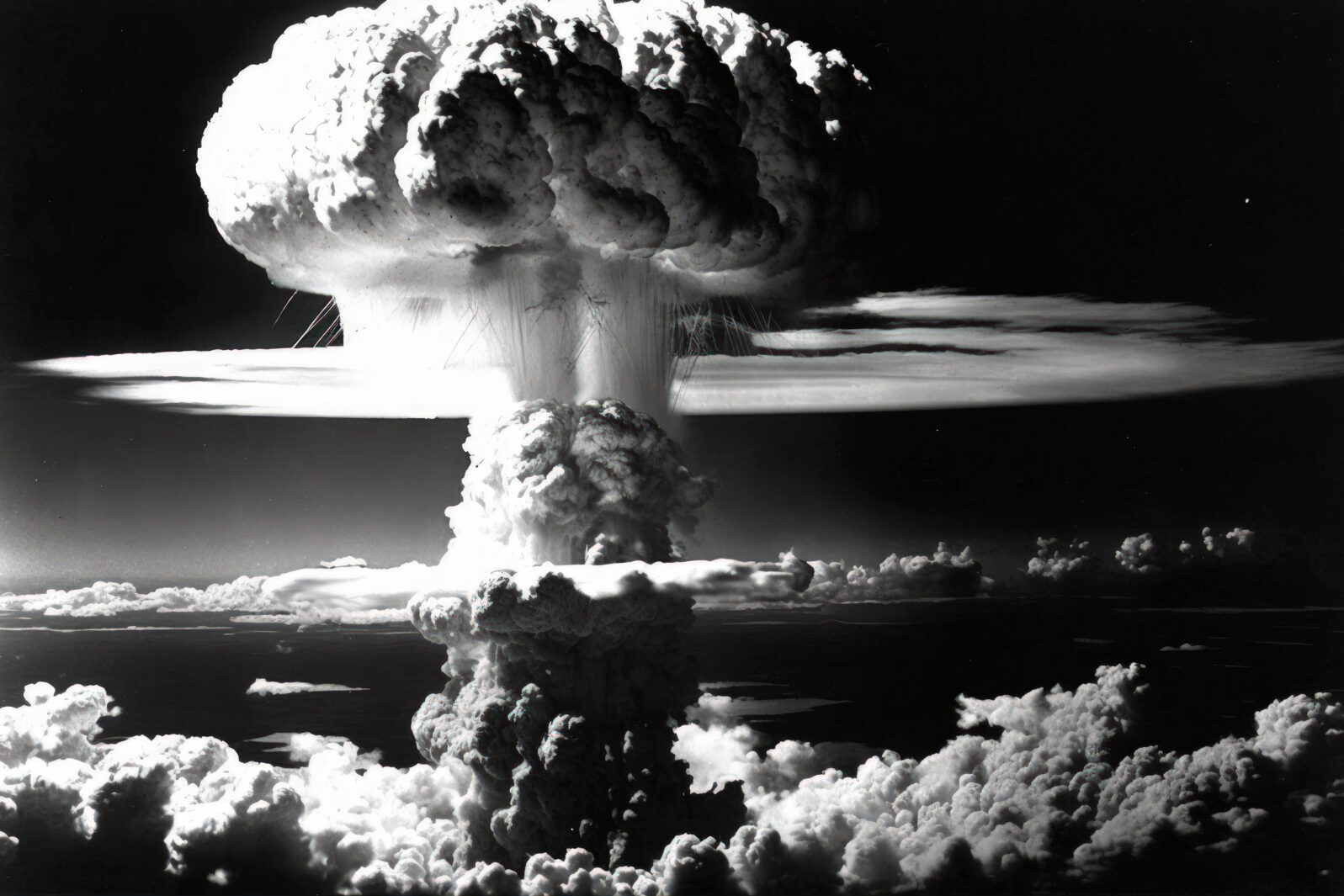American Prometheus: Destroyer of Worlds
Christopher Nolan's "Oppenheimer" meets the hype and illustrates just how world-changing the atomic bomb was“Now I am become Death, the destroyer of worlds.” So goes a line from the Hindu sacred text Bhagavad Gita, quoted by none other than J. Robert Oppenheimer, the quantum physicist who headed up the development of the first atomic bomb during World War II.
Christopher Nolan’s new film Oppenheimer hit theaters on July 21 and has given audiences a taste of why the “father of the atomic bomb” entertained that haunting, little phrase. Nolan hit this movie out of the park. With a star-studded cast, a juxtaposed and non-linear storytelling mode, and a beautiful soundtrack to boot, some critics are calling it the most important movie of the century.
That might be because the production of the atom bomb was arguably the single most consequential event in the last century. Not only did the atomic bomb put an end to the war in the Pacific in 1945, but it also ushered in a nuclear arms race with Russia, and sparked debate over the proper use of nuclear weapons and whether the scientific breakthroughs that led to the bomb should be shared with the world.
What if the Nazis Beat Us to It?
The movie goes into these questions with great depth and artistic care. Oppenheimer, played by Cillian Murphy, is an energetic young physicist who introduces quantum physics to America after studying the topic overseas. Eventually, he’s asked to lead nuclear research at the Manhattan Project by General Leslie Groves (Matt Damon) with one goal: to make an effective nuclear weapon before the Nazis do.
“I don’t know if we can be trusted with such a weapon, but I know the Nazis can’t.” That statement from Oppenheimer encapsulates the anxious, albeit exciting, motivations for developing the atomic bomb. During the war years, the physicists at the Manhattan Project, hidden in the empty spaces of Los Alamos, New Mexico, are intrigued with the idea of an atomic bomb that would actually work. Up until the weapon was officially tested on July 16, 1945, no one, including Oppenheimer, knew for sure if it would actually go off.
But, as we know, it did.
While much of the film explores Oppenheimer’s early career at Berkeley, his complicated relationships (including extramarital affairs), and his years with the Manhattan Project, the latter half delves into the ugly politics on the heels of the war. Oppenheimer, considered a hero for his success with the atomic bomb, was later investigated for his supposed involvement with the Communist Party. Lewis Strauss (played brilliantly by Robert Downey, Jr.), secretly devises a committee to evaluate whether Oppenheimer should retain his security clearance.
With Great Power
Ultimately, the movie is a meditation on power, and how and if it should be wielded. Projections of American casualties ranged from 200,000 to over 1 million if the bombs weren’t deployed. Was that exaggerated? Or a conservative estimate? Who was responsible for the lives lost in Hiroshima and Nagasaki? Oppenheimer adopted a lot of the guilt himself, which is well portrayed in the movie. However, President Harry Truman officially gave the order, and of course, the assigned pilot followed through and dropped the bombs. Additionally, the authorities in Japan refused to surrender. They wanted to expand a world empire. The Japanese army killed hundreds of thousands of innocent Chinese citizens, and aggressively spread the war when they bombed Pearl Harbor in the winter of 1941. Nonetheless, the Japanese casualties haunt Oppenheimer in the movie, and we share in the haunting as viewers. In war time, and when totalitarianism threatens to overrun the world, what’s right and wrong? Can the world handle such terrible power?
The movie doesn’t seek to answer those complicated moral questions; it simply does a precise and dramatized job in framing them, leaving the viewer stunned in place once the credits start rolling (at least, that’s what happened to me). It’s a movie, and a part of American history, that you might just spend the rest of your life wrestling with.
